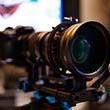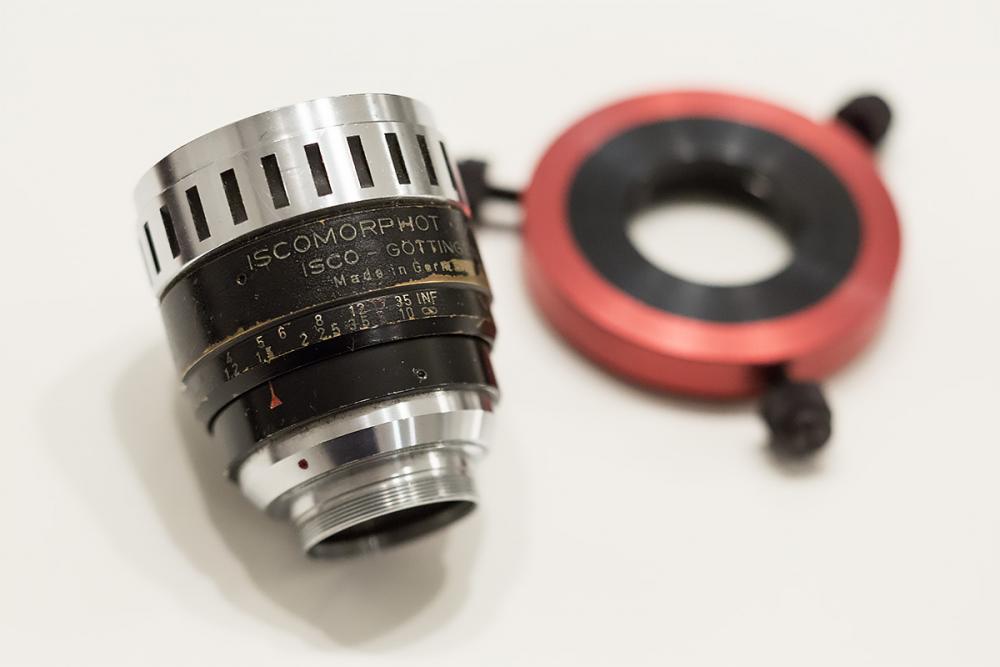Leaderboard
Popular Content
Showing content with the highest reputation on 09/17/2013 in all areas
-

Anamorphic post workflows part 1
tommykristensen and 3 others reacted to Rob Bannister for a topic
Hello everyone, This is one way to learn to deal with Anamorphic footage in post. Here is a detailed tutorial on working with anamorphic footage in post, from dealing with lens distortion and squeeze factor, moving data between applications and rendering with the proper pixel aspect ratios. I will be updating this tutorial with more info as I move through the process and adding more applications as well. Currently I cover Nuke, After Effects, Video Copilot and Maya. The next one will most likely be Houdini but if you have any suggestions, something is missing or if there is a better way to do something please let me know. I really wanted a place to consolidate all of this info and make it available to anyone who needs it, so let me know if you found this useful. Thanks Rob B http://www.robbannister.com/working-with-anamorphic-footage-in-post/4 points -

Panasonic: Consumer market will lead on 4K
johnnymossville and one other reacted to jgharding for a topic
I think it's only sports and other real life events people want to feel they're really watching that benefit. 120fps 4K sport or historical political speech is probably great! Or a concert maybe or theatre. Not so much a film drama... Because with a film you'll feel like you're really on set rather than in the world of the movie. Which sucks... As long as it's divisible by standard frame-rates and we can can turn off the frame-smoothing interpolation stuff it's all good! Last time I used a giant Samsung plasma in an office to play back a film, I went through and turned off so many things! Frame smoothing, automatic dynamic contrast, ridiculous over saturation, some strange colour correction, a weird sharpening mode. So as long as you can turn it off, all is good...2 points -

Panavision's discovery for The World's End (Sept. ACM)
Francisco Rios and one other reacted to Sean Cunningham for a topic
All of Edgar Wright's films have had impressive or, at the very least, quite pleasing and slick cinematography and his most recent installment to his and Simon Pegg's "Cornetto Trilogy", The World's End, is no exception. There's a great feature article covering the style and technical approach to the film in the September issue of American Cinematographer Magazine (http://www.theasc.com/ac_magazine/September2013/current.php). When it got to the lens selection for the anamorphic portions of the film (once the scifi madness kicks in) I wasn't at all surprised that Wright and his DP went for a classic sampling that included C-Series lenses for their greater character versus new cinema anamorphics. Wright likes to shine lights into the lens as much as anyone here (and he does it so much better than JJ Abrams). Coincidentally, Panavision made a discovery at their Woodland Hills location, a B-Series that Panavision had failed to catalog and been long forgotten. Given the way a lot of discussions go around here over this anamorphic or that anamorphic, I had to smile when I read the part where this DP praises aberration and soft edges. ...and I always like when they go into this sort of detail, about working or target stops used on a film. Anyway, it's a nicely detailed story about a contemporary anamorphic film that's worth grabbing an issue for. Only God Forgives is likewise covered in this issue, and though it's not anamorphic it is, very surprisingly, a mostly practicals show with very few cinema lights used. Having seen the film it's almost too hard to believe the information in the article.2 points -
For Sale: Iscomorphot 8/1.5x aka "baby iscorama"
Julian reacted to tommykristensen for a topic
I'm parting with my "baby iscorama". Not because I don't like it - but I never use it. I got an Iscorama shortly after I bought this one - which put this baby in the corner. I originally bought it from another user in here. Jorge De Silva - he has used it somewhat more than me, and made these videos with it. (I never got around to use 'em for video) http://vimeo.com/51675836 http://vimeo.com/58756888 Here is his sales thread: http://www.dvxuser.com/V6/showthread.php?301543-quot-Baby-Iscorama-quot-Iscomorphot-8-1-5x-anamorphic-lens!-Redstan-Clamp! Its old. So obviously there is some wear. I looks great, works great, focus is great. There is a few specs of dust, but I haven't noticed them on pictures. Overall in great condition. With the ridiculously danish import taxes, I ended up paying 700 USD. So I guess that will be the price. Is it fair? - i don't know. It's not the 2000 USD "buy now" like on eBay. I was hoping to sell it without loss. Free shipping in the EU.1 point -
What is so special about an iscorama??
roccoforte reacted to tony wilson for a topic
it is worth good money if in great optical and physical condition. if you are un sure about condition get a service from bernie o at 16.9 it will keep the value high as he is a motion picture camera and lens service tech. that looks like it is from late 60s early 70s nice vintage something this old should have the a helicoid clean and regrease and alignment check. the iscorama 54 was 1400 german dm in the late 80s used mainly by super 8 shooters the cameras cost 200-300 so that gives you an idea of it's high cost.the best camera at the time was the leicina special at 500 dm so big bucks for a lens only used sometimes. the advantage of iscorama is the original 1958 design covered 35mm format as it was design for stills cameras so edge to edge performance is simply superb for the time even today stick that on the movie camera that shot the last bond movie and it will out resolve the sensor. do not take it apart or mess with it to much a lot of iscorama have issues. do not give it to a mate or a local repair guy that would be lunatic. the smaller and more advanced movie cameras get the more this type of lens will be sort after.1 point -

Panasonic: Consumer market will lead on 4K
Julian reacted to Andrew Reid for a topic
43rumors are waiting because they want to protect the source. There's no 'deal' or conditions at all. And no, manufacturers do not get involved with purposeful leaks. Every time a leak occurs it has the potential to negatively impact sales of existing models on the shelf. We had the info jointly sent to us by a known source. I am actually quite reluctant to publish it at all. And remember that with rumour information, it is a rumour. Could be wrong could be right!1 point -
"Tony wilson" could answer that. My understanding is they were not cheap when they came out due to complexity of building them, thus why no one can make a comparable modern anamorphic at a reasonable price. You don't want to know the price from a decade ago, or even 3 years ago, it will make you weep :)1 point
-
Panasonic: Consumer market will lead on 4K
zephyrnoid reacted to pilotbayfilms for a topic
I'm not sure how I feel about this - and I'm not trying to debate - I want to like my GH3 but I would love something focused entirely on filming rather than a hybrid - at times it does feel like some features were rushed or compromised: 4:2:2? Focus peaking? The all intra seems unusable in the hint of low light, I'm also waiting for a "decent" firmware update. I would also like to see improvements on the user experience - the camera UI has a lot of segregated options, both in the software, and physical; this might be me but if you're in a rush to shoot, there's a lot of precheck. The video mentions their dedication on broadcast quality so I hope that's a hint. Regardless, I'm excited to see what this news is about in a couple of weeks1 point -
Panasonic: Consumer market will lead on 4K
zephyrnoid reacted to Axel for a topic
Don't be irritated by hypes. I still soldier on with my reliable GH2. Never before in my life had I made so many videos. That's it. The more better graded raw videos will flood the net, the more will all those 4k-downscalers (I call them 'Pro-Dads' for the amateur dad's software Mercalli) realize how "so last century" and how desperately videoish their Son-Pan-Can-4k pixel-puddles look Good question. The downside of ProRes is that it's not particularly state of the art in terms of efficiency, it's like carrying around a kettle of soup, though a bouillon cube would do and some hot water at home. Compression is not the devil, and Panasonic did always well with highly compressed codecs. Just think about a clever way to avoid the high data rates and big files that come with raw. Also, Panasonic always tried to be compatible. Probably they provide a solution for every big NLE. I wouldn't worry about that.1 point -

TrueSense Imaging (ex-Kodak) reveal 4K Micro Four Thirds sized CMOS sensor
Julian reacted to Andrew Reid for a topic
A TrueSense sensor would not likely be destined for a Panasonic, as they're making their own sensors. After a brief trip to Sony for the GH3, the GX7 once again has a Panasonic chip in it. A Four Thirds sized chip from TrueSense would more likely be destined for the Blackmagic and Digital Bolex type cameras of this world.1 point -

Music Video Shot on Optex Adapter
Zmu reacted to Chris Elkerton for a topic
Hi, I had such a good response last time I thought I would post my latest music video shot using an Optex anamorphic adapter. https://vimeo.com/74284254 Shot on a Red One mostly in 2k crop mode 96fps I wanted to replicate the look of 16mm film. I love shooting in raw, it gave me lots of flexibility in post, using LUTs to get some really filmic colours. Would be cool to get some feed back from some fellow anamorphic lovers. Cheers, Chris.1 point -

Music Video Shot on Optex Adapter
Sean Cunningham reacted to Chris Elkerton for a topic
Hey Sean, Yes I loved the soft look I was getting from the adapter and just ran with it. I think everyone gets bogged down in sharpness and tests. Sometimes we should learn to love the imperfections. Don't get me wrong I wouldn't be shooting something soft for a corporate video, but for this I think it adds so much. The taking lenses were a Canon 50mm f1.4 and my Jupiter 85mm f2. Thanks for the feedback mate.1 point -

Music Video Shot on Optex Adapter
Chris Elkerton reacted to Sean Cunningham for a topic
Some nice stuff in there. I think this is the first time I've seen anything shot on these adapters at more than 1080P. Very cool. I imagine the softness of the adapter helped with the look. More and more I'm reading about DPs purposely choosing soft lenses when shooting digital because digi lenses are just too sharp and clinical. What were your taking lenses?1 point -

TrueSense Imaging (ex-Kodak) reveal 4K Micro Four Thirds sized CMOS sensor
Francisco Rios reacted to nahua for a topic
I'm all for 10bit recording as well. Doesn't matter if is 4K, regular 1080P60P is fine, but let's get 10-12bit recording please.1 point -
I too am awaiting the GH3 user's guide! New camera announcements and theories are great and all, I follow them as much as anyone else, but I want help with using a camera that's available right now. Please finish up that GH3 guide!1 point
-
Questions about the Baby Iscorama 1.5
roccoforte reacted to Ben for a topic
Honestly, that test is a poor example of this optic's potential It's very very soft at large apertures, but I personally think it looks great once stopped down to around 5.6 However, the price inflation is out of hand I don't think it's ever worth more than $600, let alone $2k Here's some stuff I shot with it on the Helios 44-2 (I use the Nikkor 50 1.8 AI now, even sharper) http://www.flickr.com/photos/benwabbott/9777957383/ http://www.flickr.com/photos/benwabbott/9777675601/1 point -

Questions about the Baby Iscorama 1.5
roccoforte reacted to dahlfors for a topic
One of the regulars at the forum shot a nice comparison a while ago: http://www.eoshd.com/comments/topic/2170-iscorama-vs-iscomorphot-8-2x-vs-iscomorphot-8-15x/1 point -
Panasonic: Consumer market will lead on 4K
nahua reacted to johnnymossville for a topic
GH4k with 120fps and 10bit color please.1 point -

SLR Magic anamorphic prototype V3 - Part 2 - The footage
Richard Floyd-Walker reacted to Sean Cunningham for a topic
I'm having a difficult time thinking of any Kubrick films that were shot anamorphic. He's more known for 65mm and deep-focus, spherical 35mm. In fact, many of his films are in the more squarish 1.66:1 "widescreen" standard that was favored in the UK. A quick google shows that he may have only ever done one film using an anamorphic process, Sparticus. Anyway, @wondo is reacting to the reality that stopped down there is very little that distinguishes anamorphic photography from cropped spherical photography of the same field of view if you don't have a lot of z-space parallax. You won't get to see any distorted bokeh unless you stack the ND to get to a larger aperture (ala Killing Them Softly). However, he's being short sighted in the fact that opened up, night photography is patently useless for determining whether the adapter is no different than currently available options when it comes to sharpness (particularly at the edges) and chromatic aberration. Dull charts would say definitively how good the lens is but charts don't tell the whole story and so I appreciate Andrew shooting in a way that would have highlighted these defects while giving a sense of the lens's overall character in situations where the shooter isn't purposely under-exposing. His footage is rich in surface detail and texture, from edge to edge. Really oval bokeh with a 1.33x adapter will be mostly reserved for close-ups because you need a CU diopter to get them. The Tokina doublet sharpens up close and midrange shooting but it's not really good for wides, does virtually nothing for bokeh and stronger diopters aren't useable at all for wides. So, for instance, you're not likely ever going to be able to achieve something like a Tony Scott wide, shot with a 200mm a block away, with really stretched, oval bokeh for deep foreground and deep background. Lots of folks here shoot almost everything anamorphic with telephoto taking lenses either out of naivete or because they have no other option but it's not a realistic representation of how real motion pictures are made. You can't have everything. Slap on a Kowa or Sankor or Moeller and you can get that but you'll have to lock your camera down and can't do it while dollying forward towards your subject like Tony Scott might have, or track with them as they walk towards camera. You can't have everything.1 point


